The Top Ten Titanic Books that are the Hardest to Find.
People often ask me what the real rarities are in Titanic books. To answer that question, I came up with a few prerequisites: 1. the books had to be important works relating to the Titanic story; 2. they had to be out print; and 3. they had to be scarce to very scarce. Serious collectors are often hunting for the first printings of books, and these original printings can often be very hard to track down. But many titles that are very scarce in the original have been made available in modern reprint editions. For the average collector, a modern reprint is just as good a copy as an original. After all the content is exactly the same (usually). Thus I have discounted any book that has been made available in a modern reprint edition. Some titles have never seen a modern reprint, however. These latter titles make up the list of truly hard to find. From this list, I then culled titles that were too esoteric or had too limited a scope. Finally, from those remaining, I chose the ten that I think are the most interesting and worth adding to a Titanic collection.
The books I have chosen are listed in order of publication date from the earliest to the most recent. Although three of these rarities are from the time of the sinking, half of them are circa 1960 and later. The most recent title, Diana Bristow's book, is not even a decade old, so, obviously the books don't have to be really old to be very scarce. If you have all of these titles in your collection, my congratulations or condolences as the case may be, as you are a true bookoholic. Even I only have eight out of the ten! If you would like to know more about these books, see the Author Pages for additional information.
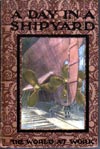 |
Arthur O. Cooke. A Day in a Shipyard. 1st printing, 1911.
A look at the shipbuilding techniques at the Harland & Wolff shipyards during the construction of Olympic and Titanic told to young readers. It has not seen a reprint since the 1930’s.
|
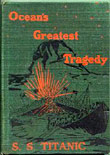 |
Ocean’s Greatest Tragedy (no author). 1st printing, 1912.
Another of the ‘instant’ Titanic books to be released shortly after the sinking. This one is by far the most scarce of the instant disaster books.
|
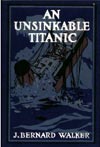 |
John Bernard Walker. An Unsinkable Titanic: Every Ship Its own Lifeboat. 1st printing, 1912.
A Scientific American editor criticizes the construction techniques used on Titanic. This book has never seen a modern reprint.
|
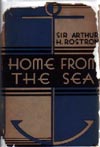 |
Sir Arthur H. Rostron. Home from the Sea. 1st printing, 1931.
The autobiography of the Captain of the Carpathia, the ship that rescued the Titanic survivors. Although there is only one chapter relating to the Titanic, Rostron is such an important player in the story that his book is a must have for any serious collector. The Titanic Historical Society did reprint a modern booklet which just contains the chapter about the Titanic disaster, but the complete book has never been reprinted.
|
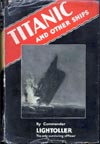 |
Comdr. Charles H. Lightoller. Titanic and Other Ships. 1st printing, 1935.
The autobiography of Titanic’s Second Officer, the senior officer to survive. Starting with his experiences on the great sailing ships as a boy, it also covers his years on the steamships, and finishes with his commanding a destroyer defending the English channel in the Great War. There are six chapters on the Titanic disaster. These six chapters were reprinted in a modern edition by the Titanic Historical Society, but the complete book has not been reprinted since 1939.
|
 |
Joseph E. Chipperfield. The Story of a Great Ship: The Birth and Death of the Steamship Titanic. 1st printing, 1959.
The building of the Titanic as seen through the eyes of a young Harland and Wolff apprentice carpenter. Another one of the early children’s books.
|
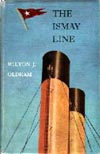 |
Wilton J. Oldham. The Ismay Line. The White Star Line, and the Ismay Family Story. 1st printing, 1961.
This book is not only the first published history of the White Star Line, it is also an excellent biography of the two men most directly responsible for the companies successes and failures, Thomas Henry Ismay and his son J. Bruce Ismay.
|
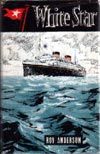 |
Roy Anderson. White Star. 1st printing, 1964.
The definitive history of the White Star Line. This impressive work follows the story of the company from its beginnings in 1849 as a sailing ship firm on the Australian run, to its transformation into one of the predominate lines on the Atlantic passenger and mail service, to its disastrous management after the Great War, which concluded with the company’s final bow when it was merged with its former rivals Cunard in 1934.
|
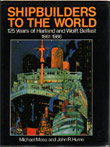 |
Michael Moss & John R. Hume. Shipbuilders to the World. 125 Years of Harland and Wolff, Belfast 1861-1986. 1st printing, 1986.
Although Titanic only gets scattered brief mentions in the text, the story of this famous shipyard is so intrinsically linked with that of the Titanic story, that it is another must have for any serious collector on the subject.
|
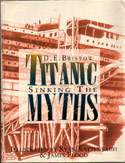 |
D.E. Bristow. Titanic: Sinking the Myths. 1st printing, 1995.
The author has the distinction of bringing fresh material to the Titanic story. Bristow did a tremendous amount of research in areas ignored by most other historians, particularly in the German language material. As such her book is a gold mine of new information. She comes to some radical conclusions and while I don’t agree with all of her theories, they make for fascinating reading.
|
|